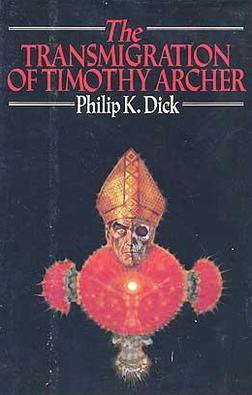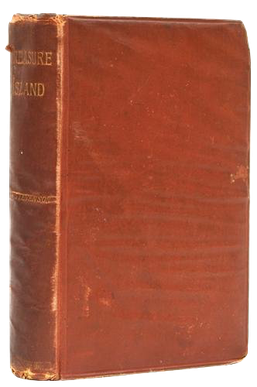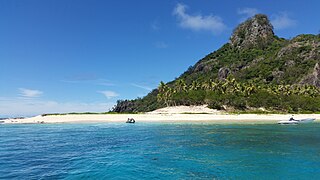Plot
The story is told by a 1st-person narrator, a fifty-nine-year-old ex-naval lieutenant whose name is Edward, though other characters usually call him Skipper or Papa Cue Ball (due to his baldness). Though the tone of the novel strives to be comic and optimistic, the narrator's life is beset by a series of tragic events: his father (a mortician), his wife, and his daughter Cassandra commit suicide; his son-in-law Fernandez is killed after he has left Cassandra to live with his gay lover; Skipper is beaten up and perhaps raped during a mutiny on board of U.S.S. Starfish, the ship he commands in W.W.II; he is harassed by a small clan of shady fishermen on the "black island" in north-Atlantic where he settles after leaving the US Navy. The narrator eventually finds shelter in a tropical island with his black mess boy, Sonny, and his lover Catalina Kate, though it is not clear if the scenes on the island, where Skipper works as an artificial inseminator, are real or simply imagined.
The novel is told in a non-linear fashion through a series of flashbacks. It is then at first difficult for the reader to understand the reasons of some weird episodes, such as the one which takes place in the second chapter, when Skipper, goaded by Cassandra, has the name of his son-in-law Fernandez tattooed on his chest in green ink. We subsequently discover that Fernandez has left Cassandra because their marriage was no more than a masquerade, devised to hide Skipper's incestuous relation to his daughter (which may also explain his wife Gertrude's suicide).

The Transmigration of Timothy Archer is a 1982 novel by American writer Philip K. Dick. As his final work, the book was published shortly after his death in March 1982, although it was written the previous year.

Treasure Island is both an adventure and historical novel by Scottish author Robert Louis Stevenson published in 1883, telling a story of "buccaneers and buried gold" set in the 1700s. It is considered a coming-of-age story and is noted for its atmosphere, characters, and action.

Marooning is the intentional act of abandoning someone in an uninhabited area, such as a desert island, or more generally to be marooned is to be in a place from which one cannot escape. The word is attested in 1699, and is derived from the term maroon, a word for a fugitive slave, which could be a corruption of Spanish cimarrón, meaning a household animal who has "run wild". Cimarrón in turn may be derived from the Taino word símaran (“wild”), from símara (“arrow”).

In Watermelon Sugar is an American postmodern post-apocalyptic novel by Richard Brautigan written in 1964 and published in 1968.
John Clendennin Talbot Burne Hawkes, Jr. was a postmodern American novelist, known for the intensity of his work, which suspended some traditional constraints of narrative fiction.

Clotel; or, The President's Daughter: A Narrative of Slave Life in the United States is an 1853 novel by United States author and playwright William Wells Brown about Clotel and her sister, fictional slave daughters of Thomas Jefferson. Brown, who escaped from slavery in 1834 at the age of 20, published the book in London. He was staying after a lecture tour to evade possible recapture due to the 1850 Fugitive Slave Act. Set in the early nineteenth century, it is considered the first novel published by an African American and is set in the United States. Three additional versions were published through 1867.

Adam Dalgliesh is a fictional character who is the protagonist of fourteen mystery novels by P. D. James; the first being James's 1962 novel Cover Her Face. He also appears in the two novels featuring James's other detective, Cordelia Gray.

A Ring of Endless Light is a 1980 novel by Madeleine L'Engle. The book tells of teenager Vicky Austin and her struggle to understand life and significance in the universe as she deals with her dying grandfather, while at the same time finding true romantic love. The title originates from a phrase in the seventeenth-century Welsh poet Henry Vaughan's poem "The World."

Edward England was an Irish pirate. The ships he sailed on included the Pearl and later the Fancy, for which England exchanged the Pearl in 1720. His flag was the classic Jolly Roger — almost exactly as the one "Black Sam" Bellamy used — with a human skull above two crossed bones on a black background. Like Bellamy, England was known for his kindness and compassion as a leader, unlike many other pirates of the time.

A castaway is a person who is cast adrift or ashore. While the situation usually happens after a shipwreck, some people voluntarily stay behind on a desert island, either to evade captors or the world in general. A person may also be left ashore as punishment (marooned).

Mutiny on the Bounty is a 1935 American historical adventure drama film directed by Frank Lloyd and produced by Metro-Goldwyn-Mayer. It dramatizes the mutiny of the HMS Bounty, and is adapted from the novels Mutiny on the Bounty and Men Against the Sea by Charles Nordhoff and James Norman Hall. It stars Charles Laughton as William Bligh, Clark Gable as Fletcher Christian, and Franchot Tone as Roger Byam.

After Dachau is a 2001 novel written by American author Daniel Quinn.
The Clarence Principle is a black-and-white manga-inspired comic written by Fehed Said and drawn by Shari Chankhamma. It is about a boy named Clarence, who, just committing suicide, wakes up in an unconventional afterlife. The comic features black humor and light drama. It was published by Slave Labor Graphics in May 2007.

The Black Book is a novel by Lawrence Durrell, published in 1938 by the Obelisk Press.

Murder on a Honeymoon is a 1935 American mystery film starring Edna May Oliver and James Gleason. This was the third and last time Oliver portrayed astute schoolteacher Hildegarde Withers; the two previous films were The Penguin Pool Murder (1932) and Murder on the Blackboard (1934). The film was directed by Lloyd Corrigan from a screenplay by Seton I. Miller and Robert Benchley based on the 1933 novel The Puzzle of the Pepper Tree by Stuart Palmer. Palmer's novel, however, did not include Inspector Piper, and has Withers doing the investigating on her own.

Monuriki is a small, uninhabited island situated off the coast of Viti Levu in the Fiji Islands, in Melanesia in the South Pacific Ocean. Monuriki is part of the Atolls islands, and related to a group of three islets in the larger group of islands known as the Mamanuca Islands. This coral and volcanic island is the smallest islet and the southernmost of a small group of three islets, west of Tavua.

The Damned is a 1947 French war film and drama film directed by René Clément and starring Marcel Dalio, Henri Vidal, Florence Marly and Fosco Giachetti.. It was entered into the 1947 Cannes Film Festival. The film is notable for its depiction of the interior of a wartime submarine and for its tracking shots through the length of the U-boat. It was shot at the Victorine Studios in Nice and on location around Toulon and the Mediterranean coastline. The film's sets were designed by the art director Paul Betrand.
The Underpainter is a novel by Jane Urquhart that won the 1997 Governor General's Award for English-language fiction, and in the same year was a finalist for the Rogers Writers' Trust Fiction Prize.

Joel Root (1770–1847) was an American sailor. He authored a journal of his around the world voyage while working as supercargo on the sealing ship Huron.

Dr. Harleen Frances Quinzel, later known as Harley Quinn, is a fictional character in the DC Extended Universe (DCEU), based on the character of the same name created by Paul Dini and Bruce Timm as a comic relief henchwoman for the supervillain Joker in the DC Animated Universe (DCAU) animated series Batman: The Animated Series (1992–1995) and later adapted to the DC Universe. Portrayed by actress Margot Robbie, she first appears in film in Suicide Squad (2016), playing a major role, and also stars in the spin-off solo film Birds of Prey (2020) and standalone sequel/soft reboot film The Suicide Squad (2021).

















